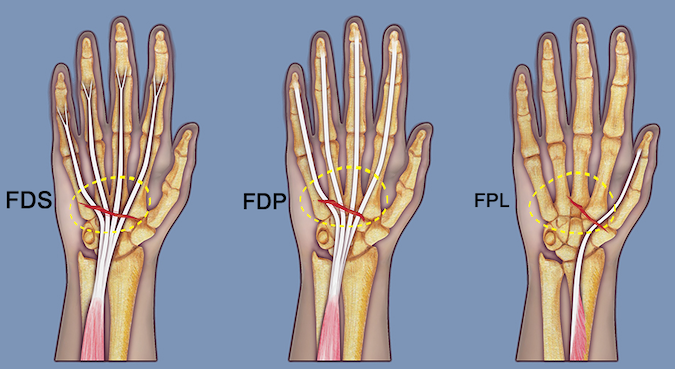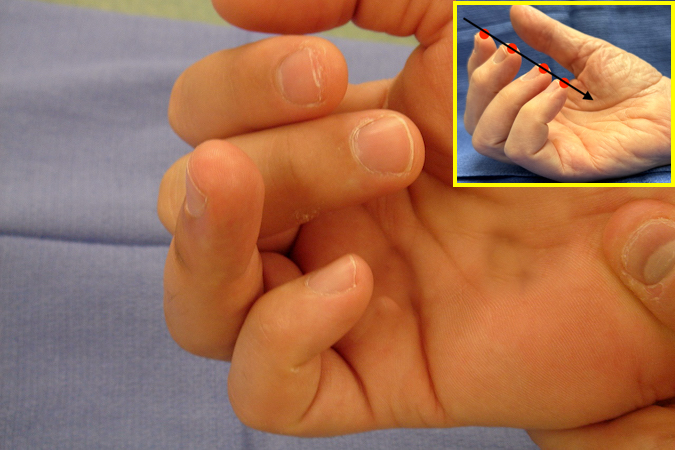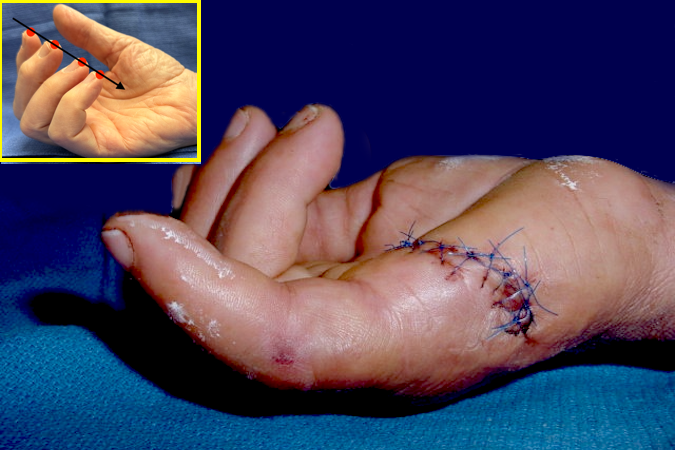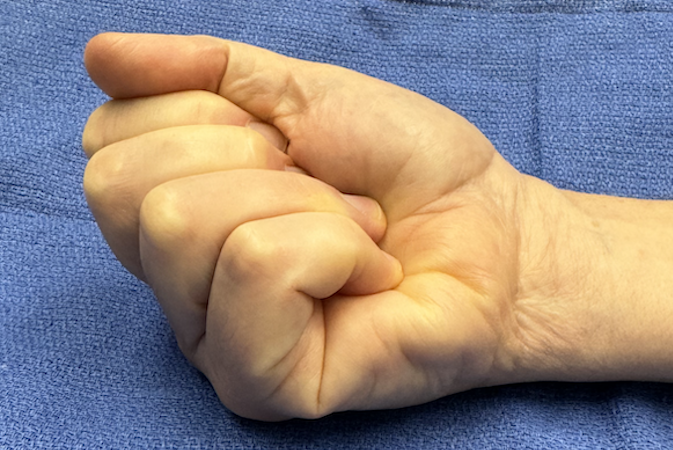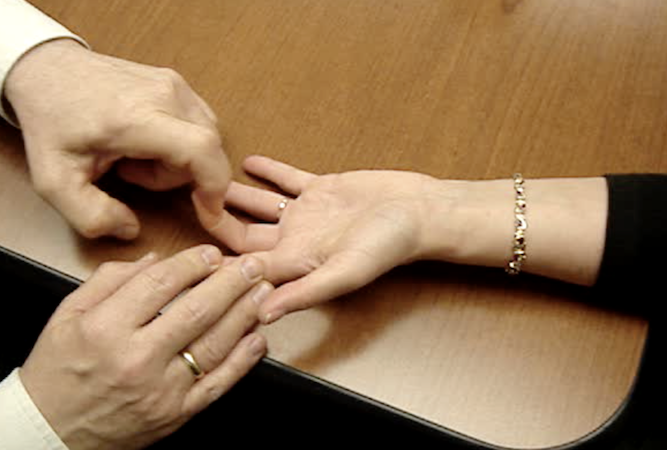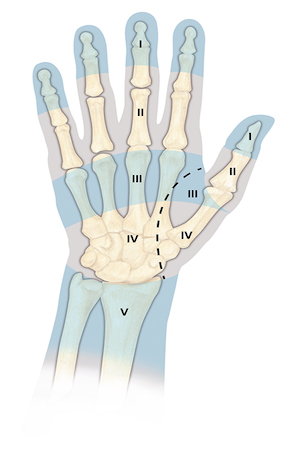Index, Long, Ring, & Little Digitorum Profundus Exam
- Origin: Ulna (proximal 3/4 of anterior and medial shaft; medial coronoid process), interosseous membrane (ulnar).
- Insertion: Four tendons to digits 2–5 (distal phalanges, at base of palmar surface). Note index finger tendon is distinct in its course.
- Innervation: Cervical root(s): C8–T1; C8–T1; Nerve: median nerve, digits 2–3; ulnar nerve, digits 4–5.
FDP Muscle and Tendon Testing
When assessing a finger injury for signs of flexor digitorum profundus (FDP) laceration, the goal is to determine whether the FDP tendon is completely lacerated, partially transected, or intact.
The first step in the examination is to observe the finger flexion cascade. When the normal hand is resting on the exam table with the forearm supinated and the wrist in mild dorsal flexion, the fingers are typically in a flexed position with the index minimally flexed and the little finger flexed the most. If a flexor tendon(s), FDP, FDS, or both are cut, invariably the injured finger falls out of the normal finger flexion cascade posture. If both the FDP and FDS tendons are completely cut, the finger often rests in an extended position. If a complete laceration of the FDP tendon is present, then a partially extended finger posture with DIP in extension and the PIP and MP joints flexed may be observed. Partial lacerations of either flexor tendon (FDP or FDS) may also disrupt the normal finger flexion cascade.
If the patient can cooperate with the request for active flexion, then the second step is to ask the patient to actively make a gentle fist. Observing active flexion of the PIP joint and the DIP joint will help identify the normal function of the FDS and FDP flexor tendons respectively.
The third step is to perform muscle testing for the flexor tendons if possible. In the examination of an uninjured FDP musculotendinous unit, the 0 to 5 muscle testing grading system is applied. In this system, zero indicates a total loss of flexor digitorum profundus (FDP) contraction, while a grade of 5 represents normal FDP function capable of contracting against standard resistance. Detailed information on graded muscle testing is provided below. Typically, full muscle testing is impractical in cases of acute laceration due to pain and tenderness. The examiner may have to rely on the observation that the laceration occurred in the palmar section 2 containing the FDP. Nevertheless, the examiner should assess the contraction of the potentially injured musculotendinous unit as comprehensively as possible. The examination's primary aim is to preoperatively determine whether the tendon is completely, partially cut, or intact. To evaluate the FDP musculotendinous unit, rest the patient's hand and upper extremity on the table with the forearm in supination and the wrist in a neutral or mildly dorsiflexed position. Start with the fingers in a neutral resting posture. Stabilize the proximal and middle phalanx in slight extension with one hand while resisting flexion of the DIP joint with other hand. Instruct for the patient to “Bend the tip of your finger. Hold it. Don’t let me straighten it.”
Definition of Positive Result in FDP Muscle Testing: A normal result is a positive one. During a normal muscle test, the examiner should observe a normal muscle contraction that can move the joint or tendon against full normal resistance.
Definition of Negative Result in FDP Muscle Testing: The FDP tendon should be observed and palpated and compared to the uninjured side. In muscle testing, an abnormal result is a negative one. During a partially abnormal muscle test, the examiner should observe an abnormal muscle contraction that can move the joint or a tendon but not against normal resistance. In a complete denervation injury, such as a high median nerve complete laceration, there may be no evidence of any muscle contraction, and the muscle testing grade will be zero.
In a patient with a laceration of the FDP at the finger’s MP joint area, the DIP joint may not actively flex at all due to a complete transection (cut) of the FDP tendon. This results in an abnormal or negative muscle testing or possibly a grade 3 due to muscle belly contraction without active index finger DIP joint flexion. However, these observations also indicate a complete FDP laceration requiring surgical repair. Thus, this negative muscle testing exam will be positive for a complete index FDP laceration. Likewise, an abnormal finger flexion cascade and/or an abnormal active motion test (fisting) may indicate a complete index FDP laceration.
- The flexor digitorum profundus (FDP) is an extrinsic hand muscle that originates in the volar forearm.
- FDP II & III (median nerve innervated) to FDP IV & V (ulnar nerve innervated)
- The FDP tendons are the origin of the lumbrical muscles. The lumbrical origins are located in palmar Section 7 and 8.
- The flexors also get nutrients from synovial fluid, local vessels, and in the finger from the vincula blood supply.
- The FDP tendons are dorsal to the FDS tendons until they pass through a slits in the FDS tendons called the Chiasma of Camper at the middle third of the proximal phalanx.
